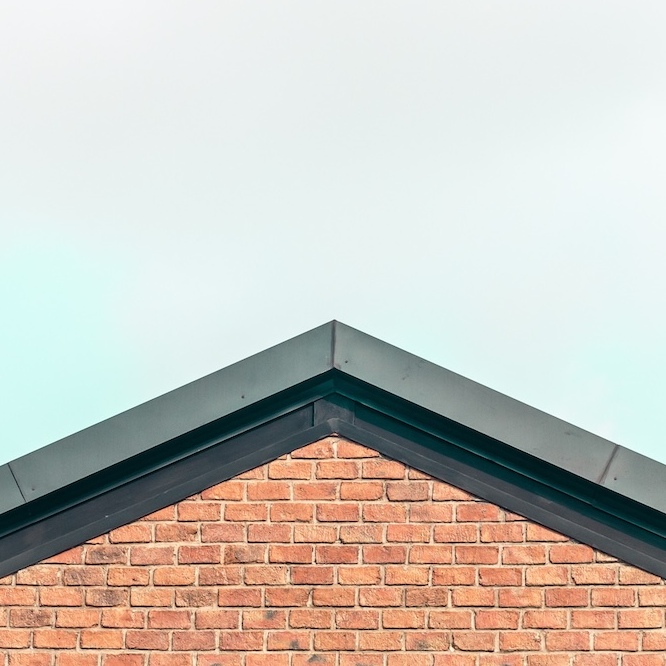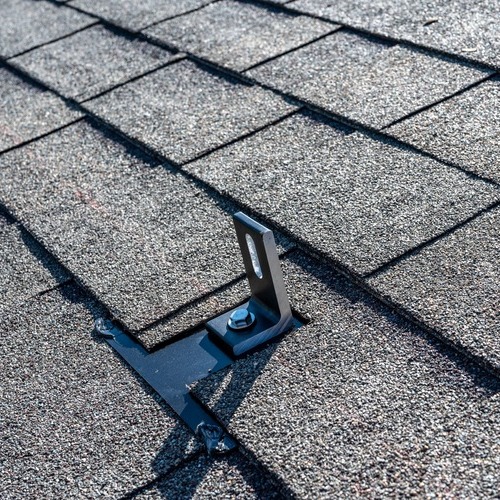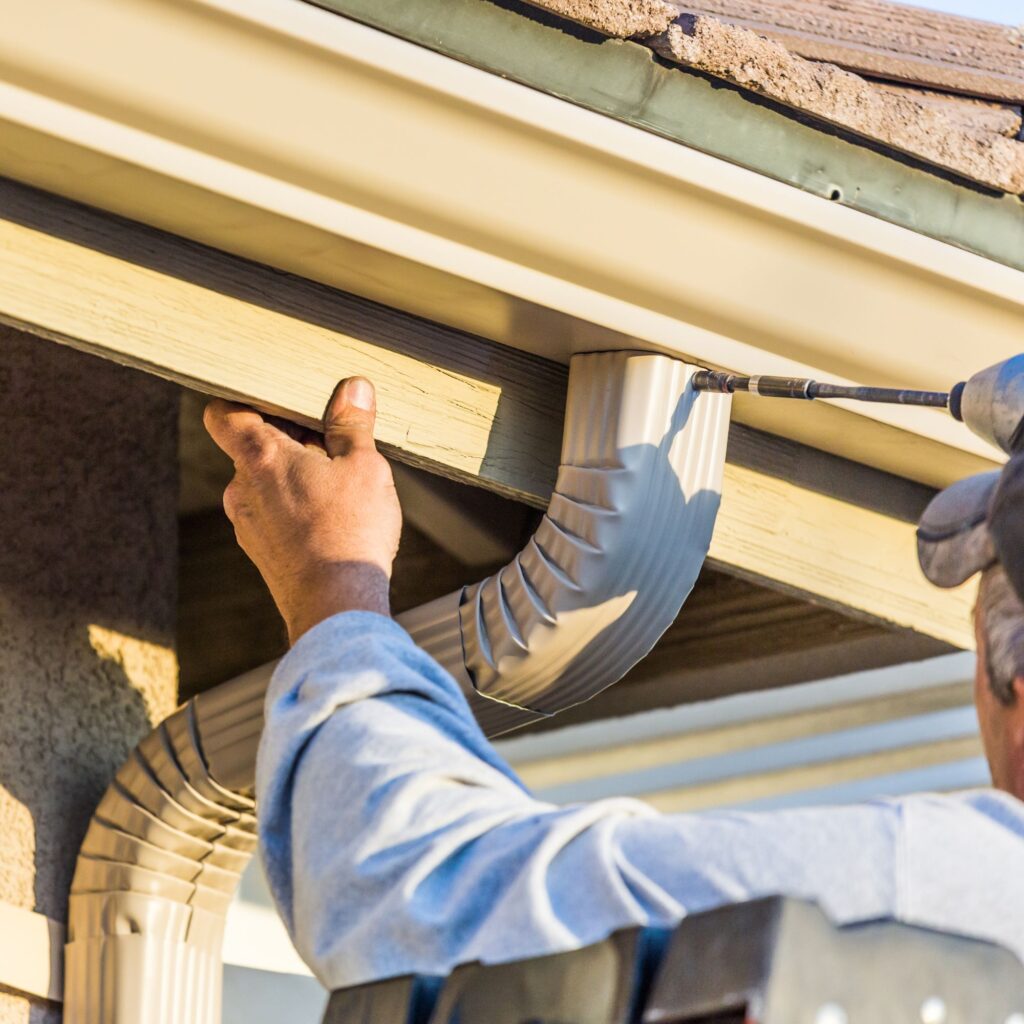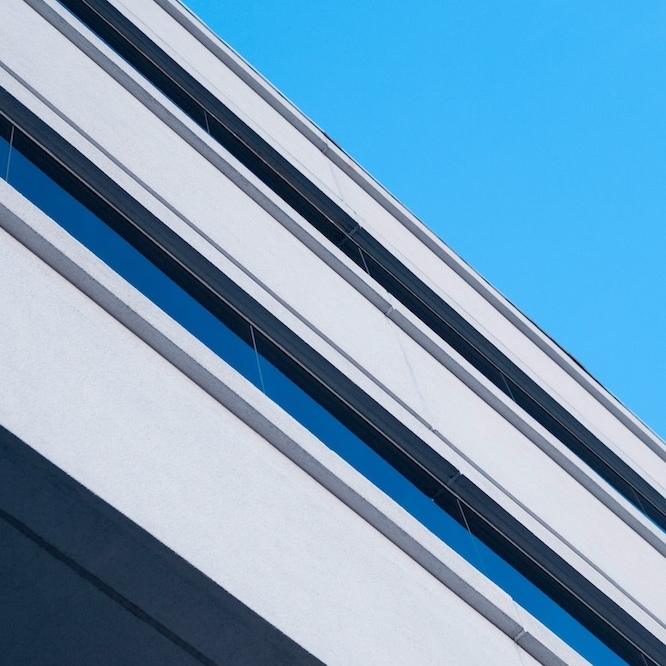
Learn More About Your Home’s Architecture
There is more to a roof than the shingles you see from the street. Under the roof are the underlayment, decking, joists, and insulation. Around the outer part of the roof is the fascia board and soffit.
When you have gutters installed, they appear to be connected to the roof, when in fact, they are attached to the fascia board. Repairing the fascia board is an important part of the gutter run system.
What is the fascia board?
The fascia board is the trim that runs along the roof edges. The fascia board is connected to the roof rafters and closes off access to the attic. The purpose of a fascia board is to provide a protective layer against the elements that Mother Nature tosses out. In most homes the fascia board is wood but, depending on a home’s architectural style, it may be PVC or non-corrosive sheet metal. In most cases, when fascia board repairs are needed, it is typically the wooden ones, however, PVC or sheet metal fascia board, repairs may be needed as well, just not as frequently.
How does the fascia board get damaged?
While the fascia board’s purpose is to provide protection against the weather, it does take a beating simply because of where it is located. Often when a home needs roof repair, fascia board repairs or replacements are needed too. Here are two key factors that can damage and cause fascia boards to start rotting.
- Leaking
This is the most common reason that causes fascia boards to rot is leaking gutter runs. Gutter runs can start leaking are improperly aligned downspouts. Excess moisture backs up into the fascia board and over time, water rot starts.
- Storms
The fascia board is considered to be the weaker component of the roof, and it is exposed to the elements, like high winds and rain during storms. This can leave your home needing fascia board repair or replacement.
What happens when you don’t have fascia board repairs done?
When you put off having fascia board repairs done, your home is at risk to the elements. It can also cause your home to use more energy as the cooled and heated air escapes through the fascia board area. If you’re getting a new roof, make sure a new drip edge is included as well as fascia board repair or replacement.
Can fascia board repairs be done without removing the soffit?
Because the soffit is positioned under the fascia, removing the fascia with the soffit still in position could damage the soffit. A professional roofing or siding contractor will know the best way to fascia board repair or replacement that will cause damage.
Can you replace the fascia board without removing the gutters?
No, if you’re making any fascia board repair or replacement, the gutter runs, and possibly the downspouts will need to be removed first. Anything attached to the fascia board will need to be removed, such as holiday lighting, plants, etc.
How is the wooden fascia board repaired?
With wooden fascia board, when it needs repairs, a contractor will typically choose to completely replace it. This isn’t something that should be a DIY project. Sometimes the contractor is able to do fascia board repair of a small section of just a few feet. They can cut the damaged sections and replace them with new wood, making sure it is secure between two rafters.
What does a damaged fascia board look like?
Some indications that you may need to consider having a contractor inspect and provide an estimate for fascia board repairs or replacement are:
- A fascia board that is unsealed or doesn’t have trim installed, leaves the fascia exposed to moisture which leads to wood rot.
- Fascia board that has algae, fungus, and mold is typical because it has become wet. Fascia board repairs aren’t sufficient.
- Fascia board with cracks are often because of fluctuating temperature. Fascia board repairs aren’t possible at this point, replacement is the only option.
- Animal and critter damage happens when they gain access through the tiniest gaps and chew into them, trying to get to the attic for shelter. When this happens fascia board repairs aren’t going to be sufficient.
- Bent or bowing fascia board often indicates structural issues and should be addressed by your roofing contractor, maybe a structural engineer.
How much does a new fascia board cost?
This can depend on the type of wood the contractor chooses to use and where they source the materials. It can vary between suppliers but can cost up to $200 per square foot. The labor to tear the damaged or old fascia board and replace it with new wood is in addition to the cost of the materials.
In Conclusion
Fortunately, fascia board replacement is approximately every 10 years. Some fascia boards last longer, such as the PVC and metal fascia. Aluminum of plastic are the best types of material for fascia replacements. Both are considered durable and weather-resistant materials that could give you a longer lifespan over wood. Now is the time to call us if you need fascia board repair in Canton, GA! Reach our friendly team at 770-735-4433!



